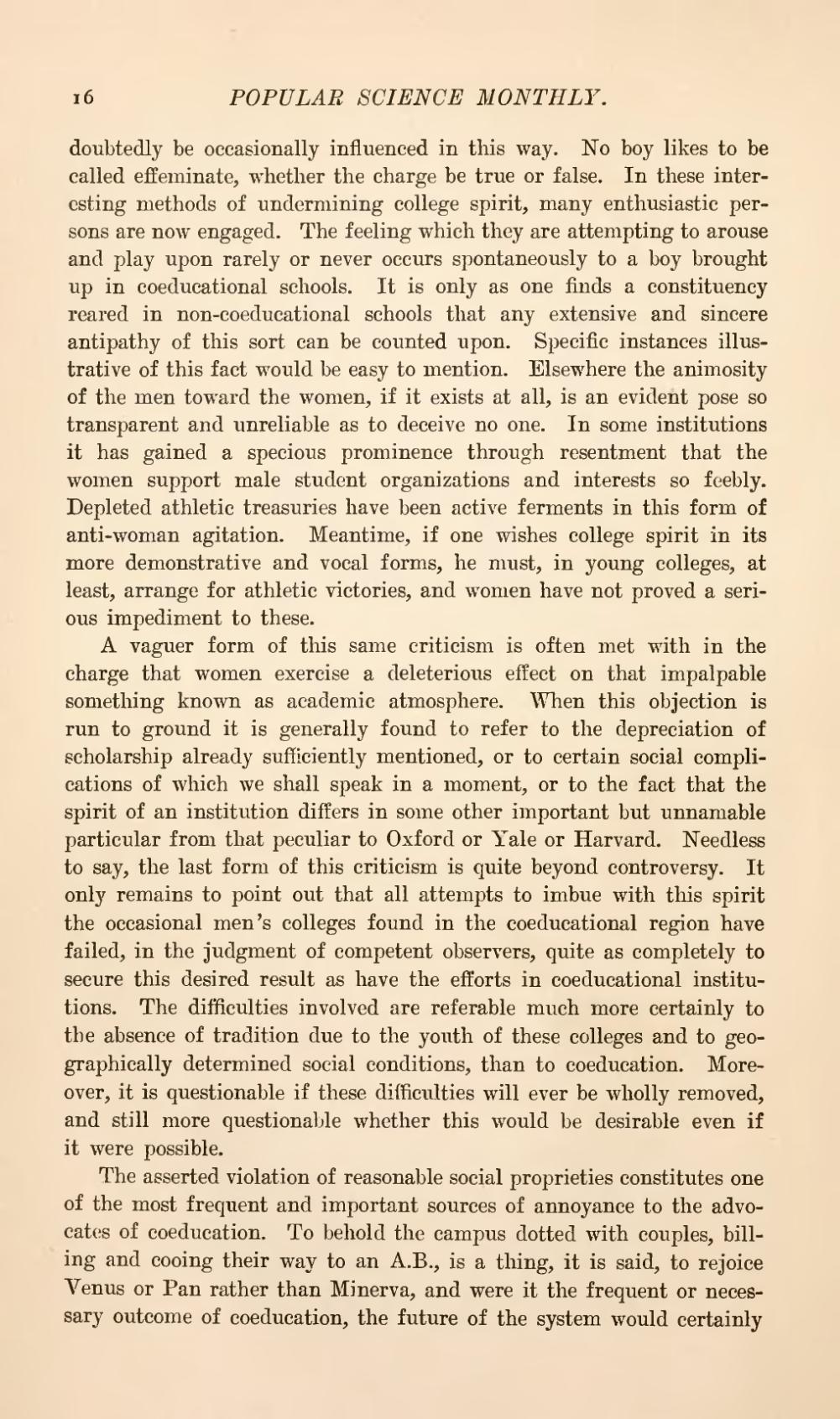doubtedly be occasionally influenced in this way. No boy likes to be called effeminate, whether the charge be true or false. In these interesting methods of undermining college spirit, many enthusiastic persons are now engaged. The feeling which they are attempting to arouse and play upon rarely or never occurs spontaneously to a boy brought up in coeducational schools. It is only as one finds a constituency reared in non-coeducational schools that any extensive and sincere antipathy of this sort can be counted upon. Specific instances illustrative of this fact would be easy to mention. Elsewhere the animosity of the men toward the women, if it exists at all, is an evident pose so transparent and unreliable as to deceive no one. In some institutions it has gained a specious prominence through resentment that the women support male student organizations and interests so feebly. Depleted athletic treasuries have been active ferments in this form of anti-woman agitation. Meantime, if one wishes college spirit in its more demonstrative and vocal forms, he must, in young colleges, at least, arrange for athletic victories, and women have not proved a serious impediment to these.
A vaguer form of this same criticism is often met with in the charge that women exercise a deleterious effect on that impalpable something known as academic atmosphere. When this objection is run to ground it is generally found to refer to the depreciation of scholarship already sufficiently mentioned, or to certain social complications of which we shall speak in a moment, or to the fact that the spirit of an institution differs in some other important but unnamable particular from that peculiar to Oxford or Yale or Harvard. Needless to say, the last form of this criticism is quite beyond controversy. It only remains to point out that all attempts to imbue with this spirit the occasional men's colleges found in the coeducational region have failed, in the judgment of competent observers, quite as completely to secure this desired result as have the efforts in coeducational institutions. The difficulties involved are referable much more certainly to the absence of tradition due to the youth of these colleges and to geographically determined social conditions, than to coeducation. Moreover, it is questionable if these difficulties will ever be wholly removed, and still more questionable whether this would be desirable even if it were possible.
The asserted violation of reasonable social proprieties constitutes one of the most frequent and important sources of annoyance to the advocates of coeducation. To behold the campus dotted with couples, billing and cooing their way to an A.B., is a thing, it is said, to rejoice Venus or Pan rather than Minerva, and were it the frequent or necessary outcome of coeducation, the future of the system would certainly
